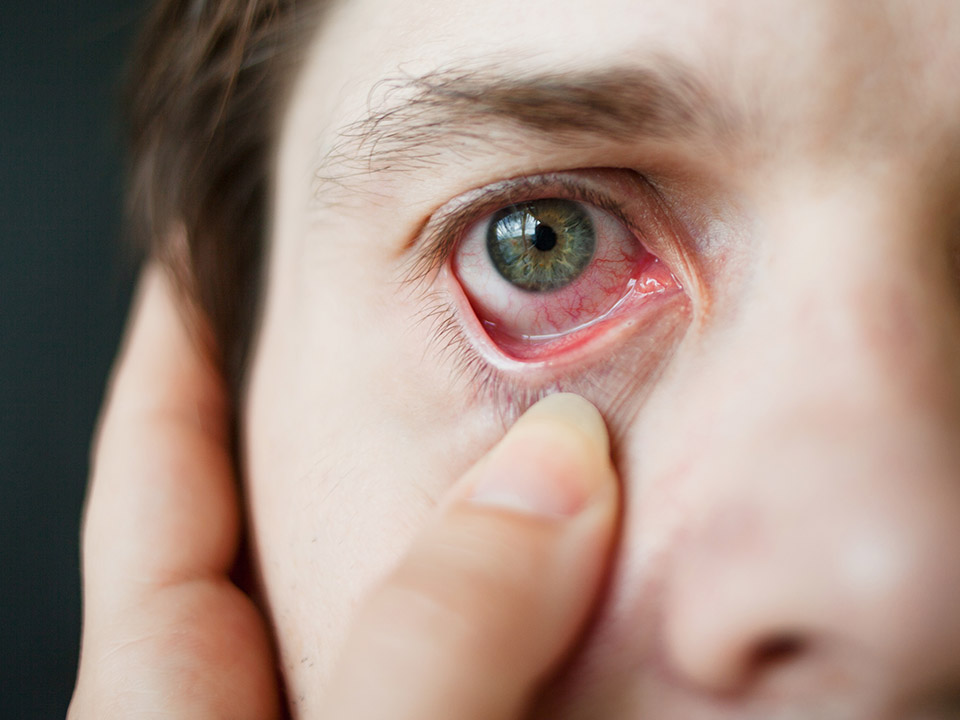Eye Allergies Demystified

Do you experience itchy, red, and watery eyes during certain times of the year or after being exposed to specific allergens? If so, you may be among the millions of people with eye allergies. According to research, about 40 percent of the US population experience allergic conjunctivitis, commonly known as eye allergies.
Despite their prevalence, many people are still unsure about what causes eye allergies and how to manage their symptoms effectively. This article will demystify eye allergies, explore their symptoms, causes, diagnosis, and treatment options, and offer tips for preventing and managing this common condition.
Eye Allergies and How They Differ From Other Eye Conditions
Eye allergies, also known as allergic conjunctivitis, occur when the immune system overreacts to allergens, such as pollen, pet dander, and dust mites, that come into contact with the eyes. This overreaction triggers a release of histamines and other chemicals that cause inflammation and irritation of the conjunctiva, the transparent layer of tissue that covers the white part of the eye and lines the inside of the eyelids.
Eye allergies differ from other eye conditions, such as dry eye, blepharitis, and conjunctivitis caused by bacteria or viruses. They are typically not contagious and do not involve an infection. While the symptoms of eye allergies may resemble those of other eye conditions, such as redness, itching, and tearing, the underlying causes and appropriate treatments may differ.
To ensure proper treatment and avoid potential complications, it is essential to accurately diagnose the cause of any eye condition, especially when dealing with eye allergies. An eye doctor can perform a comprehensive eye exam and assess your symptoms to determine whether you have eye allergies or other conditions.
Eye Allergy Symptoms
Eye allergy symptoms can vary from person to person. However, they typically involve inflammation and irritation of the conjunctiva, the transparent layer of tissue that covers the eye’s white part and lines the eyelids’ inside. Common symptoms may include:
- Itching
- Redness
- Tearing
- Burning or stinging
- Swelling
- Sensitivity to light
- Blurred vision
Causes of Eye Allergies
Eye allergies are caused by an immune system reaction to allergens that come into contact with the eyes. Common allergens that can trigger eye allergies include:
- Pollen from trees, grass, and weeds, particularly during the spring and fall seasons
- Pet dander from cats, dogs, and other furry animals
- Dust mites
- Mold spores in damp areas, such as bathrooms and basements
- Certain foods, such as eggs, milk, peanuts, and seafood
- Medications such as antibiotics and eye drops.
- Eye makeup and other personal care products come into contact with the eyes.
The Importance of Consulting An Eye Doctor
You may think that over-the-counter eye drops are enough if you experience red, itchy, and watery eyes due to allergies. However, you must consult an eye doctor if you are experiencing frequent or severe symptoms. Here are three reasons why consulting a doctor is crucial when dealing with eye allergies.
Accurate Diagnosis
An eye doctor can accurately diagnose the cause of your symptoms and provide the best treatment options for your needs. Sometimes, your symptoms might be caused by something other than allergies, such as an infection or irritation from contacts. Consulting with an eye doctor ensures you receive an accurate diagnosis and treatment plan for your symptoms.
Effective Treatment
Eye doctors have access to prescription-strength medications that are more effective than over-the-counter remedies. An allergist can also provide immunotherapy or allergy shots to help reduce sensitivity to allergens in the long term. Additionally, they can recommend lifestyle changes such as avoiding certain activities or wearing protective eyewear when exposed to allergens like pollen or dust mites.
Prevent Complications
If left untreated, eye allergies can lead to more severe problems, such as corneal ulceration (an infection of the outer layer of the eyeball). You can catch complications early and prevent them from worsening by consulting a qualified ophthalmologist. An ophthalmologist may also recommend regular checkups to monitor your condition and address any potential issues quickly and effectively.
How Do Doctors Diagnose Eye Allergies
Doctors employ several methods to accurately diagnose eye allergies so that they can provide relief from symptoms and prevent future flare-ups. Let’s take a look at what goes into diagnosing eye allergies.
Physical Examination
The first step in diagnosing an eye allergy is a physical examination. During this exam, the doctor will examine your eyes for signs of allergens like pollen or pet dander. They will also check for signs of infection, like redness or swelling, that could indicate a more severe condition than an allergy. The doctor may also measure your tear production and test for eye inflammation to help confirm their diagnosis.
Slit-Lamp Exam
During a slit-lamp exam, a low-power microscope with bright light is used to examine the front of your eyes for signs of inflammation or infection. Your doctor will examine the eyelids, lashes, cornea, sclera (the white part of the eye), iris (the colored part of the eye), and pupil for any signs that could indicate an allergy.
Skin Test
The skin test is another way that doctors diagnose eye allergies. During this test, the doctor will apply some allergen to your arm or back and observe if you develop any reaction over the next few hours. If you have an allergic reaction, they can narrow down the potential allergens causing your eye problems and treat them accordingly.
Blood Test
Another way doctors diagnose eye allergies is with a blood test called an Immunoglobulin E (IgE) test. An IgE test measures the level of immunoglobulin E antibodies in your blood which can help determine if you are allergic to certain substances or airborne particles like pollen or dust mites. This test is often used when someone has severe reactions to allergens or when skin tests cannot be performed due to certain medical conditions such as eczema or psoriasis.
Eye Allergies Treatment Options
There are several treatment options available to manage eye allergies. The most common treatments include:
- Over-the-counter and prescription allergy eye drops
- Oral antihistamines
- Decongestants
- Mast cell stabilizers
- Immunotherapy
How to Prevent Eye Allergies
One of the most effective ways to prevent eye allergies is to avoid allergens like pollen, dust mites, pet dander, and mold. It would be best to wash your hands frequently to reduce the transfer of allergens to your eyes and wear sunglasses to block out pollen and other allergens in the air.
Additionally, it’s important to avoid rubbing your eyes, as this can cause further irritation and redness. Over-the-counter eye drops can also help relieve inflammation and itching. If you wear contact lenses, it’s essential to keep them clean and disinfected to prevent allergens from sticking to them.
Conclusion
Eye allergies are an uncomfortable and often inconvenient problem. However, understanding the root causes can make it easier to manage. Recognizing common signs of an allergy and knowing how to prevent flare-ups with protection and treatments when needed can minimize these allergies’ impact on day-to-day life. With proper precautions and education, many of the inconveniences associated with eye allergies can be demystified.




